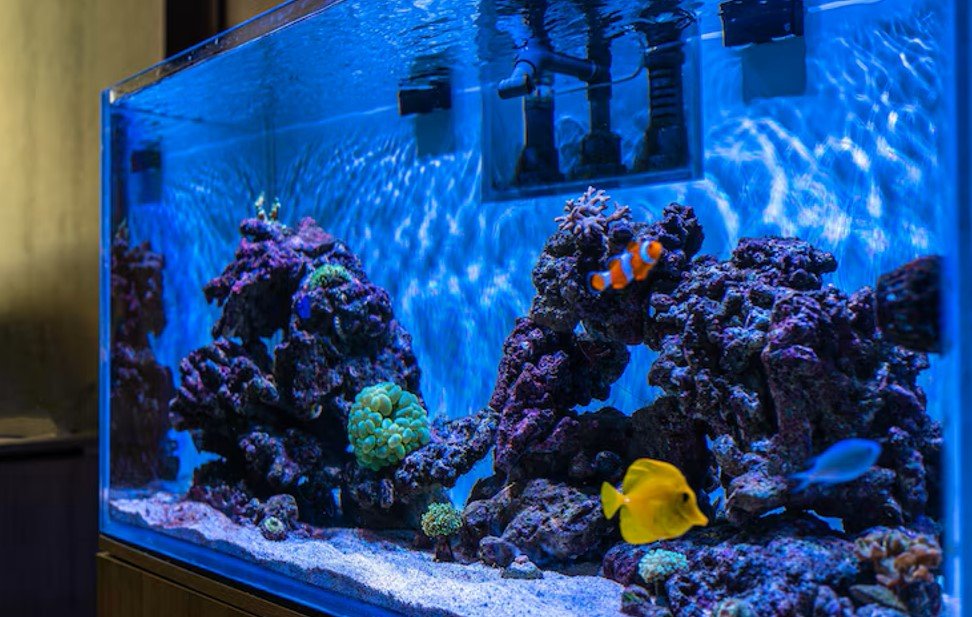Algae, a natural component of aquatic ecosystems, can become a persistent issue in aquariums when left unchecked. It not only impacts the aesthetic appeal of your tank but may also pose risks to the health and well-being of your aquatic inhabitants. Tackling and preventing algae growth in your aquarium demands a comprehensive understanding of its causes, accurate identification, and the implementation of effective solutions tailored to the specific type of algae present. At Perfect Aquatics, one of the UK's largest aquatics specialists, we are dedicated to equipping aquarists with the knowledge, resources, and support necessary for maintaining a healthy, balanced aquatic environment that discourages excessive algae growth.
In this in-depth guide, we will explore the causes and identification of common types of aquarium algae, as well as practical solutions for control and prevention. Achieve greater harmony, beauty, and balance in your aquarium by learning to combat algae growth, ensuring a thriving aquatic environment for your cherished fish and plants. As you embark on this essential aspect of aquarium management, rely on the commitment and expertise of Perfect Aquatics to guide you through every step, offering sound advice, tried-and-true techniques, and an unwavering passion for the health and vitality of aquatic ecosystems.
Causes of Algae Growth: Light, Nutrients, and Water Quality
Understanding the causes of algae growth in your aquarium is the first step towards effective control and prevention. Consider these common factors:
- Light: Excessive or inadequate lighting may contribute to algae growth. Ensure your aquarium receives appropriate light intensity and duration consistent with the needs of your plants and fish. Employing a timer to regulate lighting and placing your aquarium away from direct sunlight can help avoid overexposure.
- Nutrients: The presence of excessive nutrients, such as nitrogen and phosphorous, can fuel algae growth. Monitor and maintain nutrient levels within your tank by practising regular maintenance, avoiding overfeeding, and using adequate filtration.
- Water Quality: Poor water quality and inadequate circulation can promote algae growth. Regular maintenance, water changes, and testing can ensure optimal water quality to discourage excessive algae proliferation.
Common Aquarium Algae Types: Identification and Characteristics
Accurately identifying the type of algae present in your aquarium is critical for implementing appropriate control measures:
- Green Water Algae: Caused by free-floating, microscopic algae cells, this type of algae turns aquarium water green and cloudy. In severe cases, it may reduce visibility and negatively impact fish health.
- Green Spot Algae: This category includes several species of green algae that typically appear as small, circular, and stubborn growths on the surfaces of aquarium glass, decorations, and slow-growing plants.
- Hair Algae: Characterised by long, filamentous growths resembling strands of hair, hair algae can attach to plants, decorations, and other surfaces within the aquarium.
- Brown (Diatoms) Algae: Diatoms, a type of brown algae, often appear in new aquariums or those with silicate-based substrates. This algae type manifests as a brown, powdery film on tank surfaces and decorations.
Algae Control Solutions: Manual Removal, Chemical Treatments, and Biological Controls
Consider these effective solutions for controlling algae growth within your aquarium:
- Manual Removal: Physically removing algae from surfaces can be a simple and effective approach to control, particularly in response to small-scale outbreaks. Employ tools such as algae scrapers, brushes, or sponges for efficient removal.
- Chemical Treatments: In cases of resistant algae or more extensive infestations, chemical treatments, such as algaecides or nutrient-removing additives, may offer a valuable solution. Always use chemical treatments carefully and follow manufacturer instructions to avoid harming your fish and plants.
- Biological Controls: Introducing organisms that naturally consume algae, such as certain fish species (e.g., Siamese algae eaters), snails, or shrimp, provides a sustainable, biological solution for algae control. Be sure to choose species compatible with your existing aquarium inhabitants.
Prevention Strategies: Optimal Lighting, Maintenance, and Nutrient Management
Put these preventive strategies into practice to maintain a healthy, balanced aquarium environment:
- Optimal Lighting: Install lighting appropriate to your aquarium's specific needs, incorporating a timer to maintain a consistent light cycle. Monitor and adjust the intensity, duration, and spectral composition of your aquarium lighting as necessary.
- Regular Maintenance: Perform consistent maintenance tasks, such as water changes, filter cleaning, and gravel vacuuming, to maintain optimal water quality and address nutrient imbalances that can lead to algae growth.
- Nutrient Management: Carefully manage nutrient inputs in your aquarium by avoiding overfeeding and overstocking, using high-quality food, and incorporating nutrient-removing filter media or additives when necessary.
Conclusion
Controlling and preventing algae growth in your aquarium is vital for maintaining a vibrant, healthy, and aesthetically pleasing environment for your aquatic inhabitants. By understanding the causes of algae growth, identifying the specific algae type present, and employing effective control and prevention solutions, you can achieve a harmonious, balanced aquarium that both you and your fish will thoroughly enjoy. With the expert guidance, innovative techniques, and steadfast support of Perfect Aquatics, you can embark on this vital aspect of aquarium management with confidence, skill, and an unwavering commitment to the health and vitality of your cherished aquatic ecosystem.
Conquer algae control and prevention in your aquarium with Perfect Aquatics, your trusted ally in cultivating a healthy, thriving aquatic environment. Browse our collection of accessories, including aquarium pumps and filters, today.

